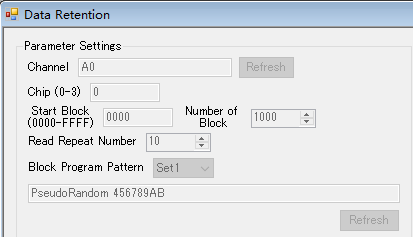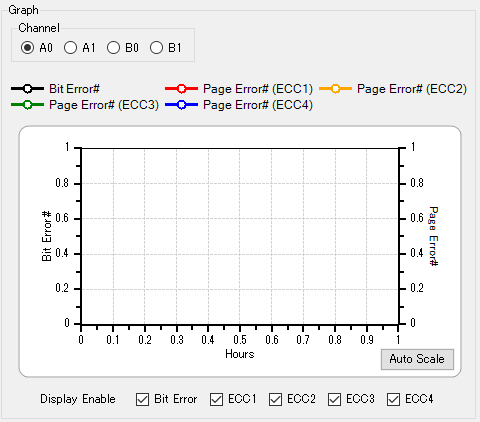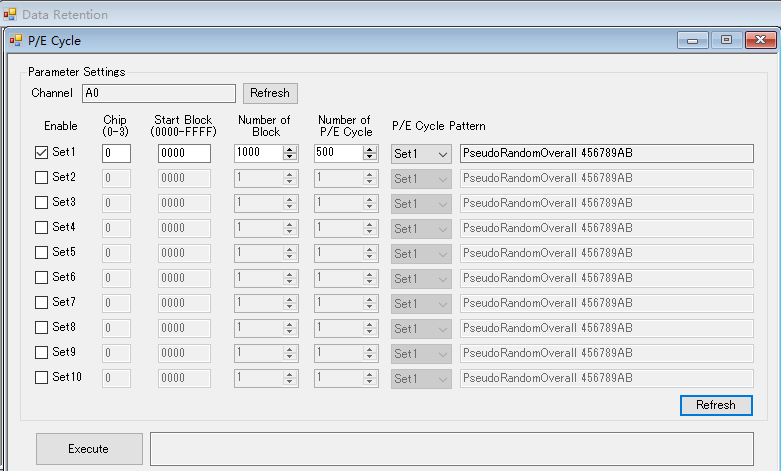Nand Flash Data Retention Test Methods
Overview of Data Retention
Over time, data stored in flash media will suffer from storage errors. The following two reasons mainly cause Data retention errors:
1. The Time-dependent Dielectric Breakdown (TDDB) of FG causes the low-field leakage current to become larger and larger, and the leakage current becomes larger;
2. Operation of Erase and Program.
Data storage errors are closely related to the number of Program/Erase cycles. The more P/E cycles, the higher the error rate of Data Retention. At the same time, Data Retention is also directly related to ECC strength. Even if bit flip occurs, the error correction algorithm can still be used. Correcting errors back to partial errors, different strengths of ECC have an extremely important impact on Data Retention.
Therefore, the evaluation of Data Retention must be based on the conditions of P/E cycle and ECC, and it is not rigorous to answer the Data Retention of flash memory under a single condition. Strictly speaking, it should be how long the data can be stored under the conditions of how many Program/Erase and what kind of ECC strength.
Factors affecting Data Retention include:
1. P/E Cycles;
2. ECC strength;
3. Temperature environment;
4. Others (such as radiation, light, etc).
If the fourth special environment is not considered, the evaluation of Data Retention needs to integrate the other three conditions. Among them, the high temperature environment can also be used to accelerate the evaluation of Data Retention.
It is not enough for the testing department to simply evaluate data retention in a non-P/E state. It is also necessary to evaluate the storage time under different P/E times, so that the R&D personnel can correctly select the ECC strength and objectively evaluate the storage time of the data.
Divide a certain number of P/E cycles into different intervals, and establish a mathematical model based on ECC, P/E times and bit error rate for the test results. It is necessary for R&D personnel to comprehensively evaluate Nand's Data Retention. For example: MLC can evaluate 500 times/1000 times/1500 times/2000 times/2500 times/2800 times/3000 times Program/Erase conditions and the ECC strength specified in the datasheet and the storage time under the ECC strength specified in the datasheet, often it has more practical application significance.
The closer the Nand Flash is to the P/E Cycle critical value, the greater the impact of each P/E on its Data Retention. Therefore, when the critical value is approached, the P/E cycle interval can be narrowed, such as: every 200 P/E cycles Do a Data Retention review.
Nand Flash Data Retention Test Methods
According to the JEDEC standard, the Data Retention of Nand Flash can be tested under accelerated conditions of high temperature environment.
Nand Flash Data Retention Test Principle
Re-read the data written to Nand in advance (very important! It is not necessary to compare the previously written data because errors may occur in the process of writing data. If you compare the written data directly, you may get errors The conclusion), and then save it as a separate file, with the passage of time or temperature changes, compare the data written in Nand with the separate file to see if there is any error, this test can be accelerated under high temperature conditions.
Basic setting: ECC1 is set according to the datasheet regulations (eg: 24bit/1024Byte), and the other three groups can use higher-strength ECC to evaluate in which ECC interval an error will occur.

Tested by Renice NFA100-E Nand Flash Tester
For the new Nand Flash, there is no influence of the P/E cycle, so the parameter setting and measurement can be performed directly.
1. Set the number of Blocks to be tested, the number of reads and the pattern of Blocks to be written (for example, a set of pseudo-random numbers seeded with 456789AB);

2. Under normal temperature, Renice NFA100-E will execute Erase first, and then put the pseudo-random Program with 456789AB as the seed to the specified Block, and then read the written data, save this data file, and create a file for comparison ;

3. Create a result file, and all comparison results will be automatically saved to the result file;
4. Then set the time, such as 1000 hours, to start the verification of Data Retention. If an error occurs, the data in Nand will be different from the specified comparison file;
5. Errors under various ECC conditions will be displayed in the form of graphics and data as shown below;

6. Put the Nand Flash with the pseudo-random number written in it into a 120°C high temperature box for 34 minutes and 13 seconds, and then take it out to see if there is any error. If there is no error, it means the data can be stored for one year. Loop tests until an error occurs. The number of loops without errors indicates how many years the data can be kept.
To evaluate the Nand Flash that has passed the P/E cycle, you need to add the P/E cycle test to the Nand Flash.

After each round of P/E cycle (500 times of P/E is a round as shown in the figure above), repeat the actions 1-6 to evaluate the Data Retention under different P/E times and different ECC conditions.